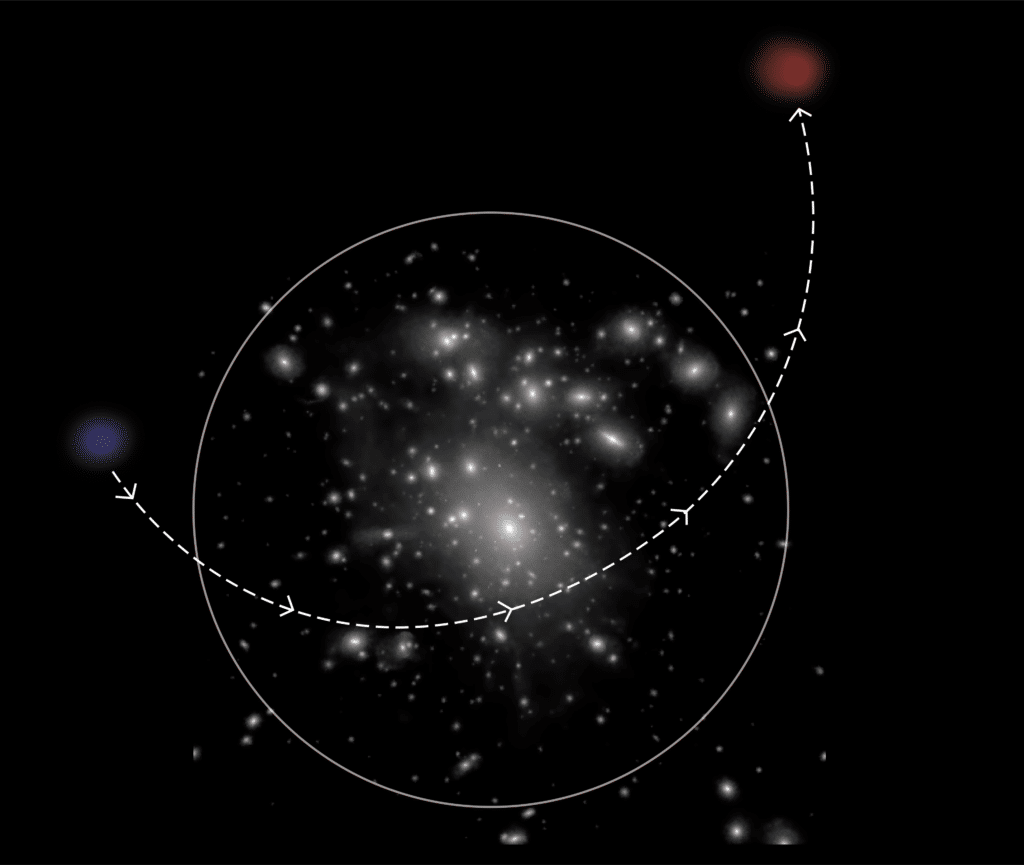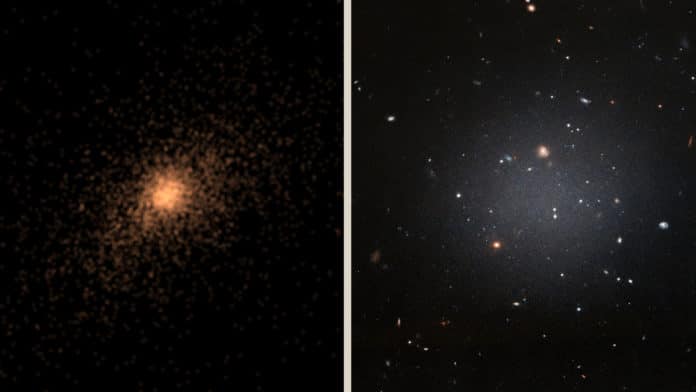What are Ultra Diffuse Galaxies?
Ultradiffuse galaxies or UDGs are dwarf galaxies that exhibit low surface brightness, but their optical extent is comparable to that of Milky Way-type galaxies. Their low luminosity is due to the lack of star-forming gas.
Due to low surface brightness, they are very difficult to detect.
Using sophisticated simulations, an international team of astronomers at the University of California, Riverside, has detected a few “quenched” UDGs in low-density environments in the universe. A quenched galaxy does not form stars.
Co-led by Laura Sales, an astronomer at the University of California, Riverside, said, “What we have detected is at odds with theories of galaxy formation since quenched dwarfs are required to be in clusters or group environments to get their gas removed and stop forming stars. But the quenched UDGs we detected are isolated. We were able to identify a few of these quenched UDGs in the field and trace their evolution backward in time to show they originated in backsplash orbits.”
“A backsplash galaxy is an object that looks like an isolated galaxy today but in the past was a satellite of a more massive system—similar to a comet, which visits our sun periodically but spends the bulk of its journey in isolation, far from most of the solar system.”
“Isolated galaxies and satellite galaxies have different properties because the physics of their evolution is quite different. These backsplash galaxies are intriguing because they share properties with the population of satellites in the system they once belonged to. Still, today they are observed to be isolated from the system.”

All UDGs are said to be dwarf galaxies, but not all dwarf galaxies are UDGs. For example, at similar luminosity, dwarfs show a very large range of sizes, from compact to diffuse.
A UDG has the stellar content of a dwarf galaxy, 10-100 times smaller than the Milky Way. But its size is comparable to the Milky Way, giving it the extremely low surface brightness that makes it special.
Sales said, “The dark matter halo of a dwarf galaxy has a mass at least ten times smaller than the Milky Way, and the size scales similarly. UDGs, however, break this rule and show a radial extension comparable to that of much larger galaxies.”
José A. Benavides, a graduate student at the Institute of Theoretical and Experimental Astronomy in Argentina and the first author of the research paper, said, “One of the popular theories to explain this was that UDGs are ‘failed Milky Ways,’ meaning they were destined to be galaxies like our own Milky Way but somehow failed to form stars. We now know that this scenario cannot explain all UDGs. So theoretical models are arising where more than one formation mechanism may be able to form these ultra-diffuse objects.”
Sales said, “The value of the new work is twofold. First, the simulation used by the researchers, called TNG50, successfully predicted UDGs with characteristics similar to observed UDGs. Second, the researchers found a few rare quenched UDGs for which they have no formation mechanism.”
“Using TNG50 as a ‘time machine to see how the UDGs got to where they are, we found these objects were satellites several billion years before but got expelled into a very elliptical orbit and look isolated today.”
The simulations suggest that quenched UDGs can commonly make up 25% of an ultra-diffuse population of galaxies. In observations, however, this percentage is much smaller.
It suggests that multiple dwarf galaxies remain undetected to the telescopes. The results of this study could help scientists discover new strategies for surveying the low-luminosity universe.
The team is further planning to study UDGs in TNG50 simulations. They sought to understand why these galaxies are so extended compared to other dwarf galaxies with stellar content.
Journal Reference:
- Benavides, J.A., Sales, L.V., Abadi, M.G., et al. Quiescent ultra-diffuse galaxies in the field originating from backsplash orbits. Nat Astron (2021). DOI: 10.1038/s41550-021-01458-1
